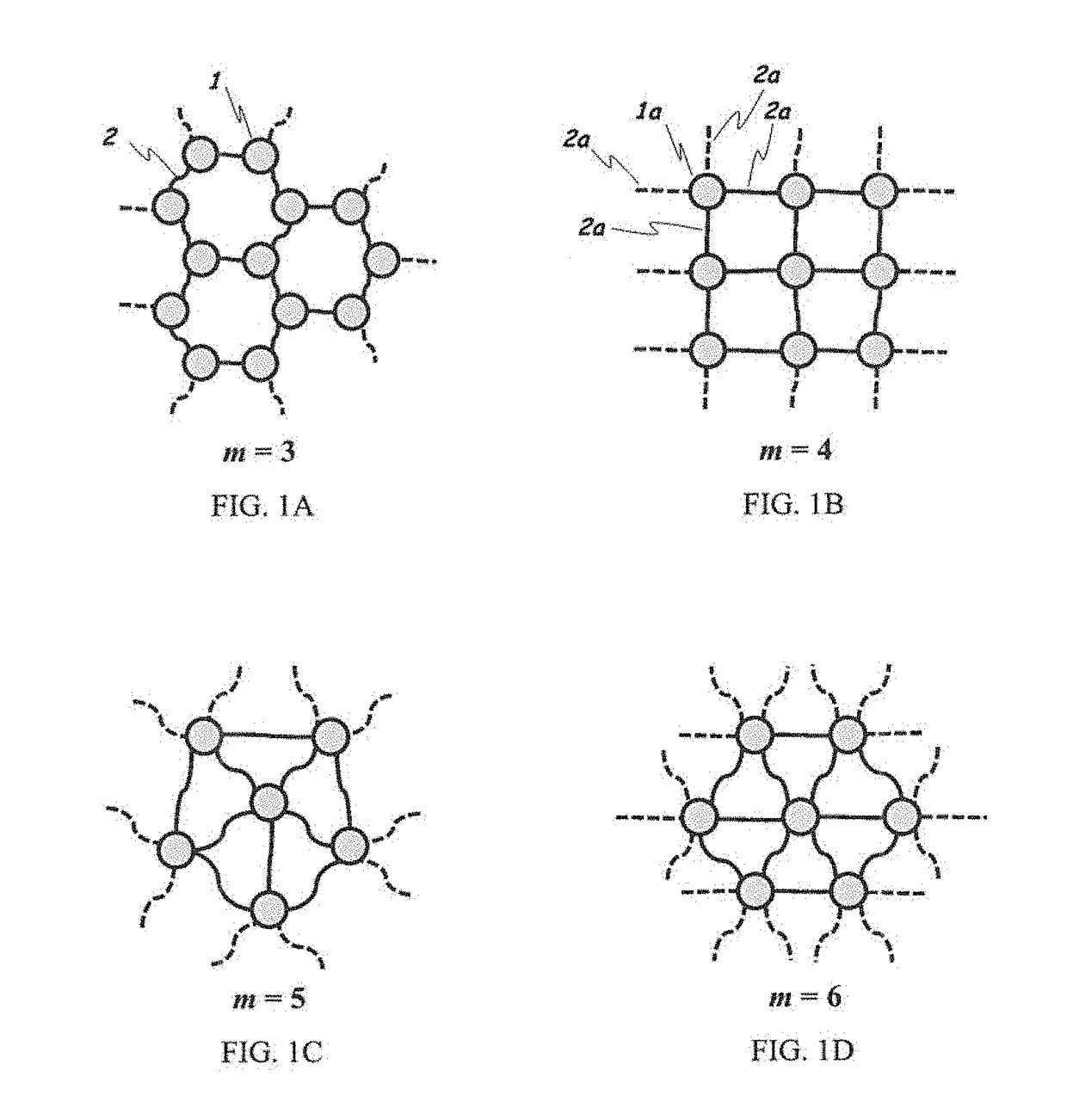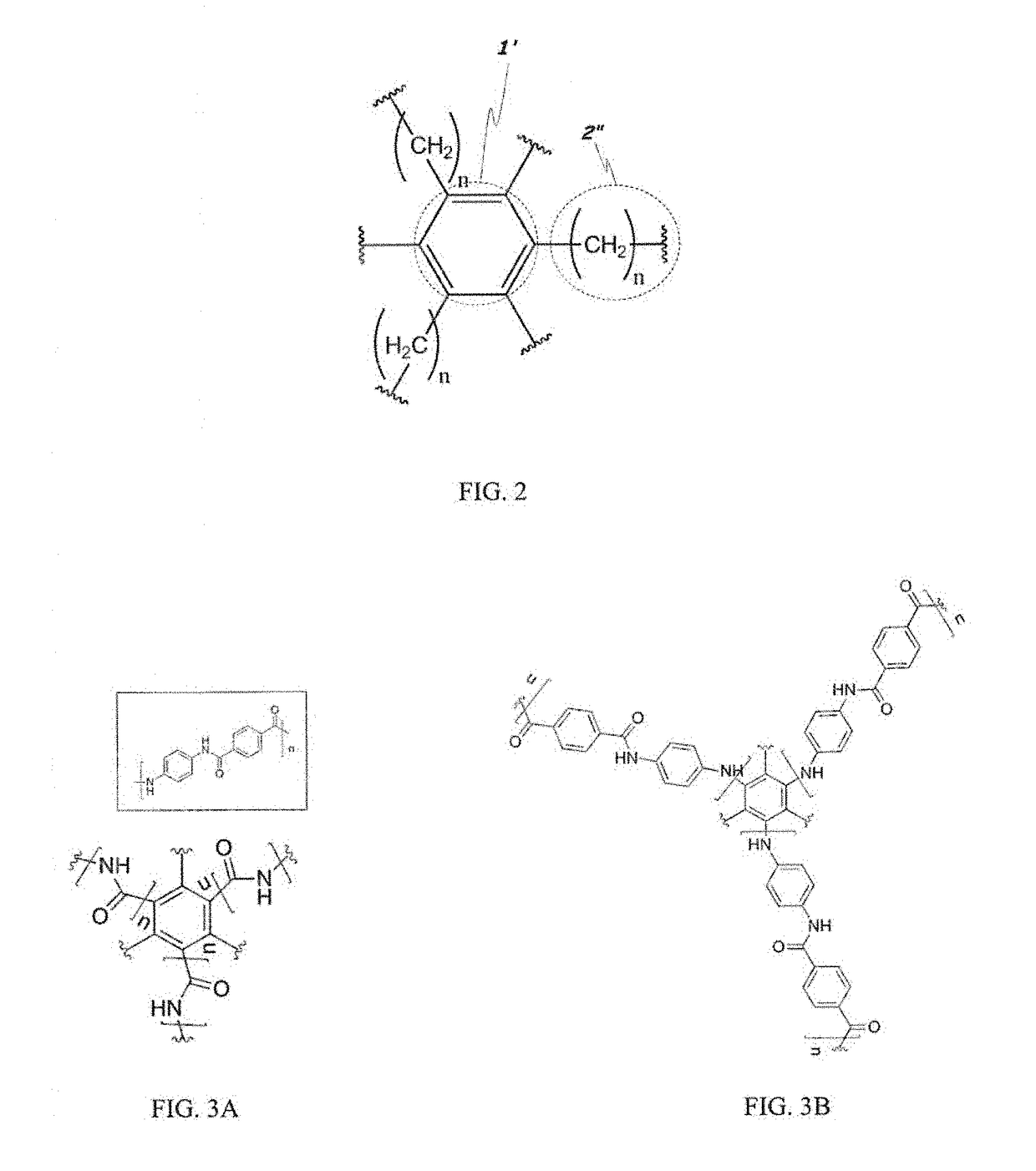Two-dimensional polymers comprised of a combination of stiff and compliant molecular units
a two-dimensional polymer and compliant technology, applied in the direction of shields, etc., can solve the problems of limiting the potential of graphene as a structural engineering material, brittle behavior, crack propagation in a brittle manner, etc., to achieve high rigidity, high modulus and strength, and extended solvency of 2d polymers
- Summary
- Abstract
- Description
- Claims
- Application Information
AI Technical Summary
Benefits of technology
Problems solved by technology
Method used
Image
Examples
example 1
[0120]Polyamide polymer is prepared by charging p-phenylenediamine (2-5 g, 1 eq.), 5 wt % tetrabutylammonium bromide (TBAB) catalyst, and 0.15-0.20 M NaOH solution (15-20 mL) to a flask and stirred at RT under nitrogen until all components are completely dissolved. A stoichiometric amount of triphenylene-tricarboxylic acid chloride monomer is dissolved in chloroform (15-20 mL) and added in aliquots to the stirring diamine solution. Evolution of HCl gas formed upon addition and continued until several minutes after all acid chloride solution was added. The reaction was allowed to stir for 2 at room temperature. Alternatively, if carboxylic acids or esters are used instead of acid chlorides, a reaction temperature of 120° C. would be required to complete this reaction. In this case, a higher boiling solvent, such as 2-heptanone, would be needed. Yet interfacial polymerization would be less likely to be necessary as the amines and acids / esters would be more soluble at elevated temperat...
example 2
[0121]Benzophenotetracarboxylic dianhydride was reacted with an excess of methanol at 55° C. for 4 hours while stirring. Triamino-triphenylene was added to the reaction and allowed to amidize at 50° C. for 1 day.
example 3
[0122]Imide polymers were generated upon the heating of isolated amide polymers in an air-circulating oven at 200° C. for 2-16 h followed by 230° C. for 0.5-16 h. The excess solvent and any residual volatiles are be removed from the desired product under reduced pressure or using vacuum distillation.
PUM
| Property | Measurement | Unit |
|---|---|---|
| length | aaaaa | aaaaa |
| length | aaaaa | aaaaa |
| size | aaaaa | aaaaa |
Abstract
Description
Claims
Application Information
 Login to View More
Login to View More - R&D
- Intellectual Property
- Life Sciences
- Materials
- Tech Scout
- Unparalleled Data Quality
- Higher Quality Content
- 60% Fewer Hallucinations
Browse by: Latest US Patents, China's latest patents, Technical Efficacy Thesaurus, Application Domain, Technology Topic, Popular Technical Reports.
© 2025 PatSnap. All rights reserved.Legal|Privacy policy|Modern Slavery Act Transparency Statement|Sitemap|About US| Contact US: help@patsnap.com



